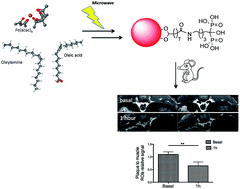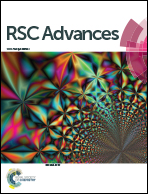Microwave-driven synthesis of bisphosphonate nanoparticles allows in vivo visualisation of atherosclerotic plaque†
Abstract
A fast and reproducible microwave-driven process has allowed us to synthesise neridronate-functionalised nanoparticles. Contrary to tradition, the phosphate groups decorate the outside layer of the particles providing Ca2+ binding properties in vitro and selective accumulation in vivo in the atheroma plaque. In vivo and ex vivo detection by T2-weighted MRI is demonstrated and validated by histology. The accumulation in the plaque takes place in less than one hour following the intravenous injection, which is particularly suitable for clinical applications.


 Please wait while we load your content...
Please wait while we load your content...